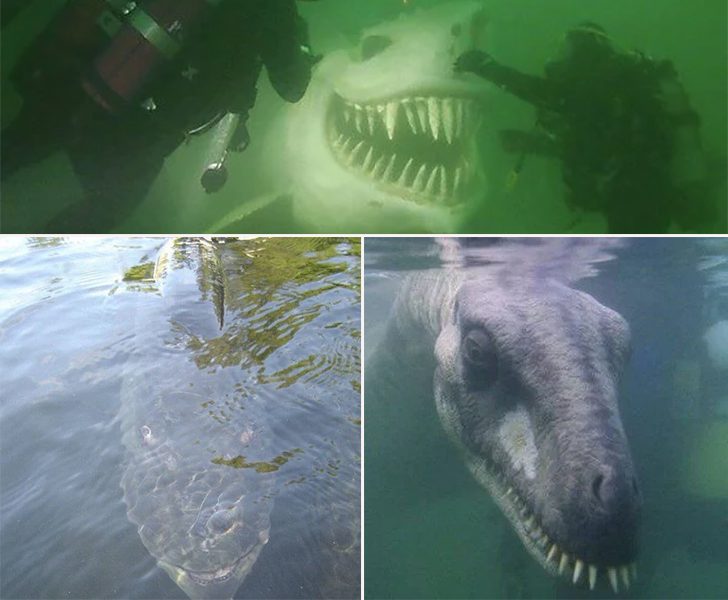
Thalassophobia is a complex word to describe something quite simple - a fear of the ocean. Apparently, quite a few people have this fear, and it's totally understandable... The waves hide so many unexplained and strange things that will make your hair stand on end.
There are times when people are scared of creatures under the water. People can get the creeps from remnants of human activity, like shipwrecks. Sometimes it's the absolute nothingness that scares us! We've got some pictures that'll let you know if you have thalassophobia. Even if you don't feel fear, some of them will cause you to feel that way!
View at your own risk!
Shark Attack
Deep-sea divers encounter all manner of creatures on their exploratory missions, and close encounters with sharks are pretty common. It’s typical to steer clear of the elasmobranch fish, particularly when you encounter a school of sharks much like those in this photo.
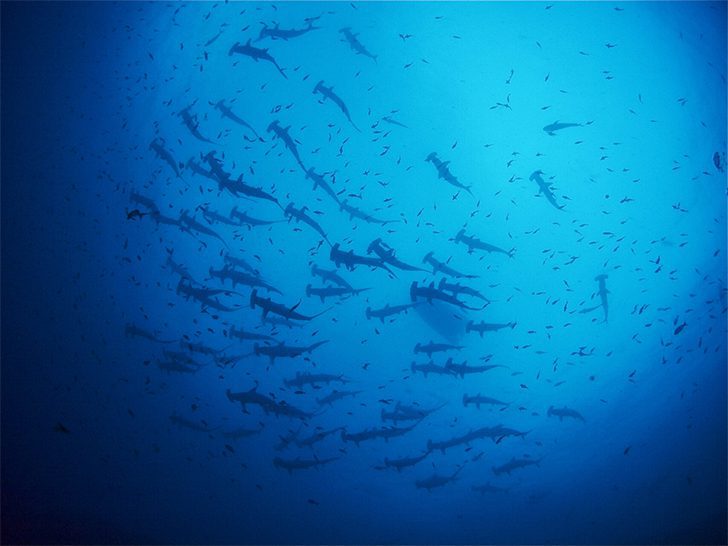
Despite their scary reputation, these marine mammals don’t pose a threat to humans. For starters, the cold-blooded carnivores have existed for as long as time, and humans are not part of their natural diet. They’ll only attack out of curiosity or in retaliation, given that there are people who hunt them for their skin, fins, internal organs, or meat.
Something or Someone is Always Keeping Watch
If you are freaked out by the prospect of diving to the greater depths of the ocean, the thought that there are underwater inhabitants keeping watch is even more unsettling. What appears to look like the shape of an eye is an underwater statue.
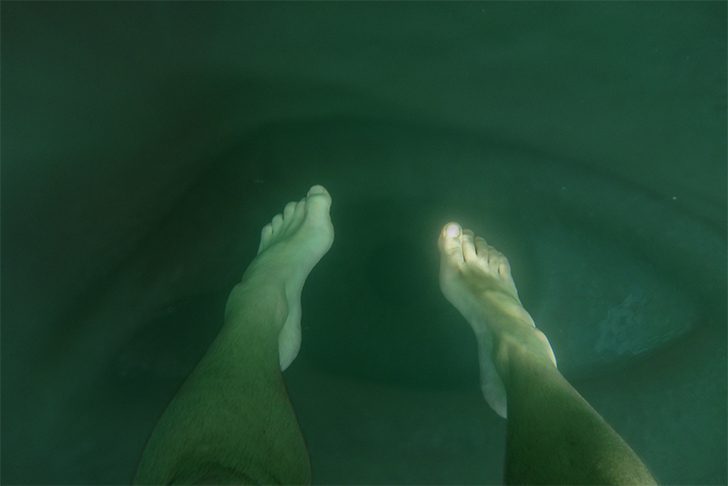
It isn’t uncommon for odd objects to be found at such depths, and a case in point is the 11-foot marble statue that currently stands at Lake Michigan. An Italian family commissioned the graven image depicting Jesus on the cross in 1956, but it ended up at the bottom of the lake somewhere along the way. It now serves as a monument to deceased divers.
Spot The Croc
The ocean is home to some of the most dangerous creatures, and this photo serves as proof of what a regular swim in one of these bodies of water can unearth. Most folks would bolt out of there after this sighting, but this person simply had to take a photo of the crocodile. For Florida natives, it’s not strange to come across semi-aquatic reptiles in strange places.
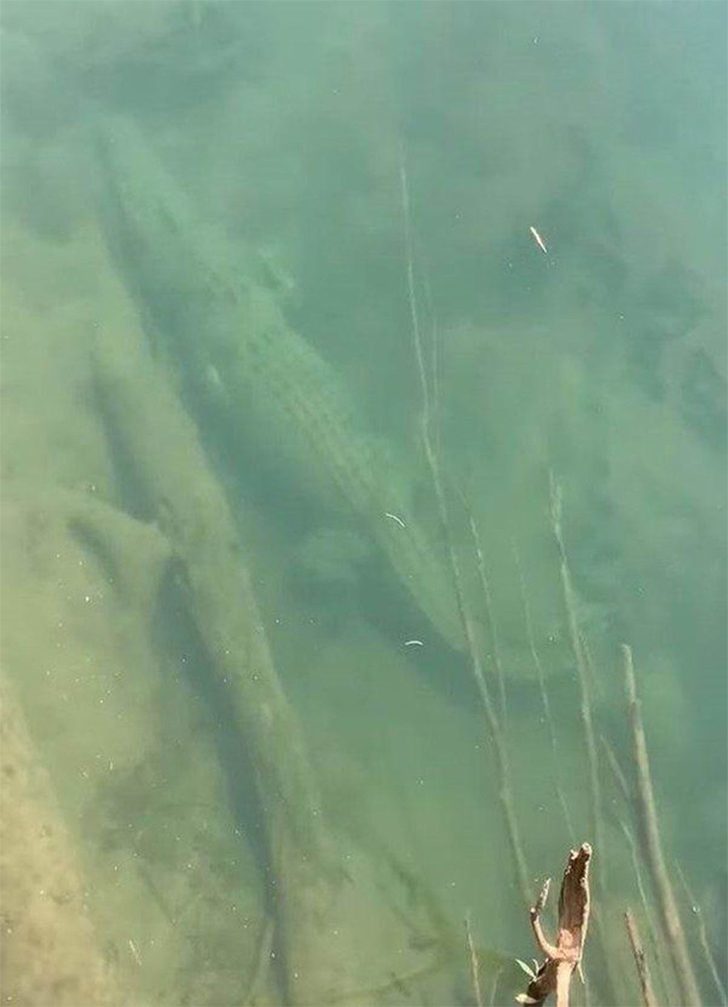
Early in 2018, a Sarasota County family discovered an 11-foot intruder taking a dip in their pool. A professional came to catch the alligator and safely take it to its natural habitat. The footage went viral under the hashtags #neveradullmoment and #onlyinflorida.
Eight-Limbed Wonders
Depending on how you look at it, some sea creatures are pretty cool, and the octopus is one of them! Having eight limbs that all have a mind of their own sounds like an incredible superpower. So, the legendary Stan Lee teamed up with Steve Ditko to create the Marvel Comics character “Doctor Octopus.”
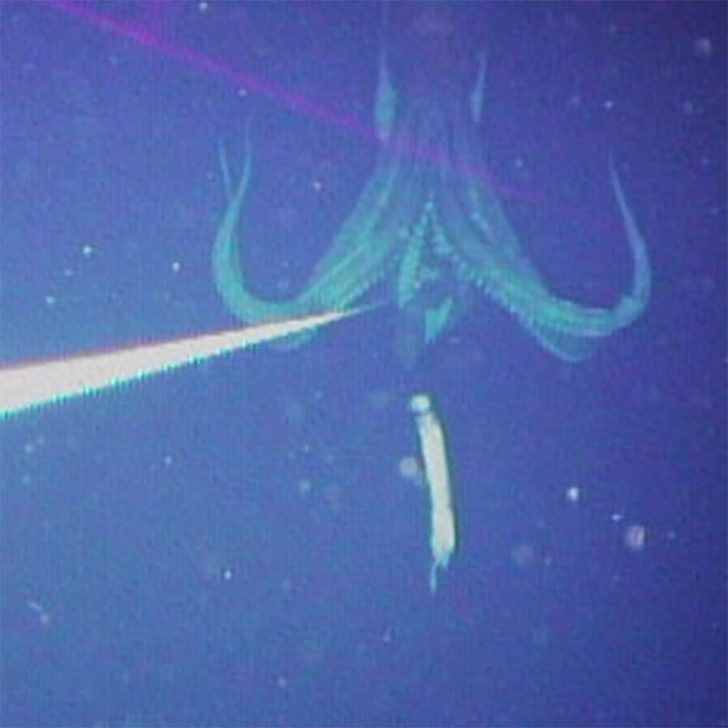
The cephalopods are bizarre creatures attributed to everything mysterious and creepy. They are pretty old, with the oldest fossil dating back to the Carboniferous period. Mating is a one-off affair for male octopuses. Despite the process happening via external fertilization, after offering females their “donations,” the blue-blooded males wander off to take their final breath.
Shadowy Figures
Darkness is a powerful tool used by most horror genre filmmakers to dial up the scare factor. This photo sums up why because all it takes is the shadow of what seems to be a colossal creature to frighten the best of us.
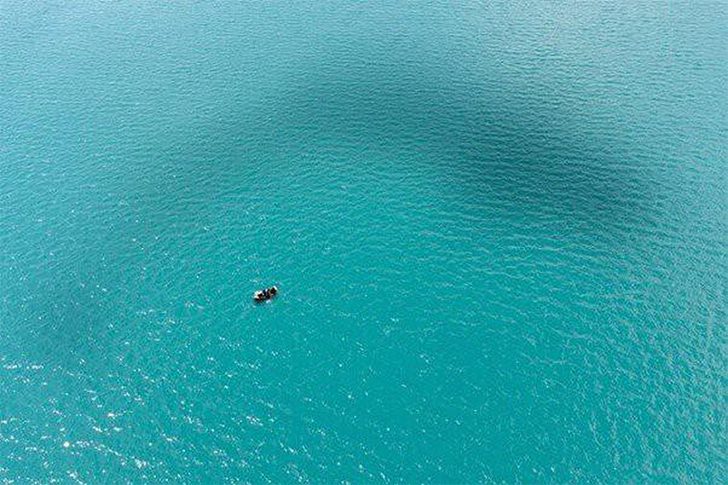
Most of us share a fear of the unknown, but nyctophobia describes the irrational fear of the dark. Darkness sparks the petrified state because it triggers the imagination. For people who are plagued by the condition, their minds go into overdrive thinking about what could be hidden in the shadows of darkness.
Quest for the Perfect Shot
The quest for an Insta-worthy photo has seen many people risk their lives for that perfect shot. Take one look at this man’s heart-racing antics and judge whether it was worth it.
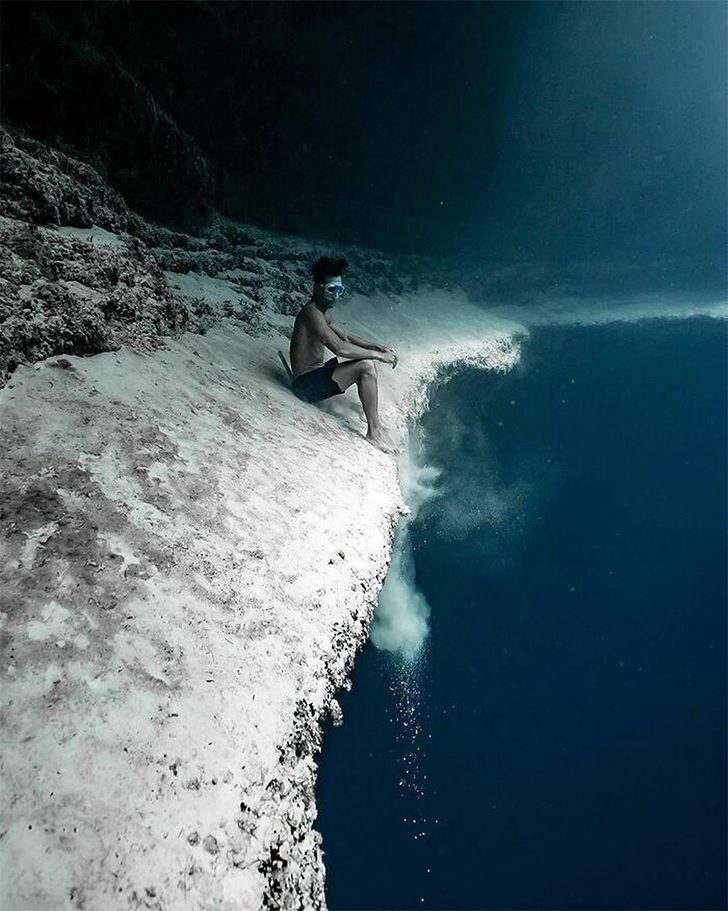
A viral photo of a couple posing dangerously at the edge of a cliff went viral in 2021. The picture depicted the woman grabbing at her supposed significant other’s hand as he dangled off the cliff’s edge. Posted by a Twitter user called Shreela Roy, the couple’s identity wasn’t unmasked. However, Internet sleuths went to work and tried to debunk the photo’s legitimacy. Most concluded that it was the result of some clever Photoshop.
Deep Dives
They say that there’s always an exception to rules, but a “no diving” sign is one you want to follow. It doesn’t take much to conclude that something terrible happened at that spot. Thankfully, most scuba divers are also limited in what they can explore recreationally.
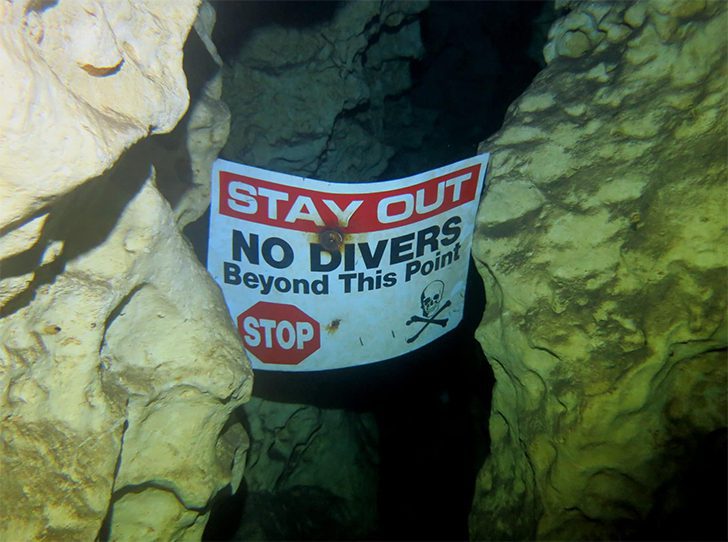
The diving depth is capped at 130 feet because it’s deemed the safest. Extensive training, more equipment, and years of experience are required to embark on deeper dives. Ahmed Gabr recorded the deepest scuba dive, and in just 12 minutes, he reached 1,090 feet below the surface of the Red Sea. However, it reportedly took him 15 hours to get back to the surface.
Eerie Silence
It’s scary to think of all the shadowy creatures inhabiting the Earth’s vast bodies of water. What’s even more terrifying is picturing all the dangerous creatures that could be lurking below the immense depths of our oceans. Jaws” and Loch ness monster-inspired movies are to blame for taking our minds there.
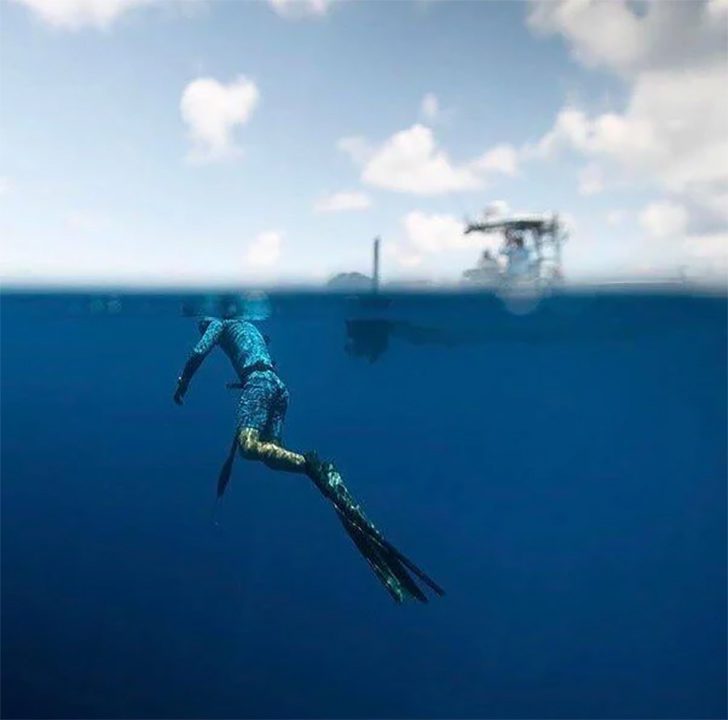
They say that still waters run deep, but seas are far from quiet environments despite their appearance. The underwater islands are home to a cacophony of sounds created by their inhabitants, crashing waves, water vessels, and the rain. According to The Conversation, most water-based animal species rely on these natural noises for navigation.
An Elusive, Massive Sea Creature
Weighing 440 pounds and standing at 33 feet, as per National Geographic, scientists still don’t know too much about the giant squid. The large invertebrates are pretty elusive creatures, and almost everything known about them is from the study of carcasses hauled in by fishers or washed up on beaches.
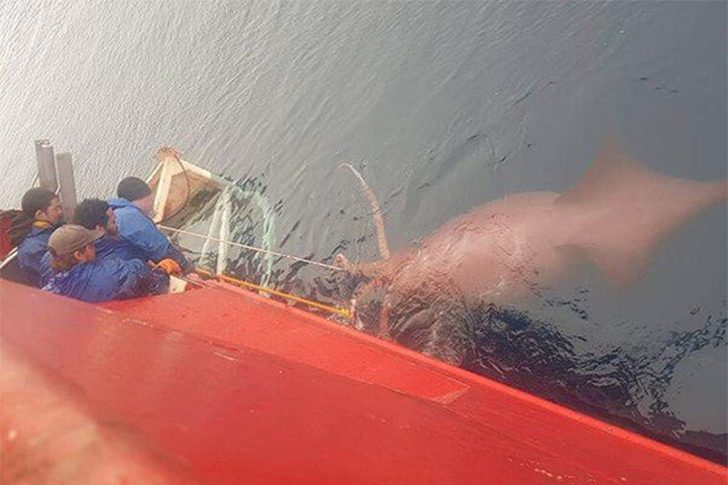
Now picture encountering one of these sea creatures, and it doesn’t help that they have the most enormous eyes in the animal kingdom. The colossal organs allow them to see objects in lightless depths where other sea animals can’t perceive anything. They also have two long tentacles alongside eight arms for feeding.
Humans Are Truly Unlimited
Alongside oil tankers and cargo carriers, cruise liners are some of the largest water vessels traversing our waters. The sheer size of these vessels only becomes more apparent when you see such a photo. The Oppama, also known as the TT Seawise Giant, once stood as the heaviest self-propelling ship and a testament to what humans can achieve.
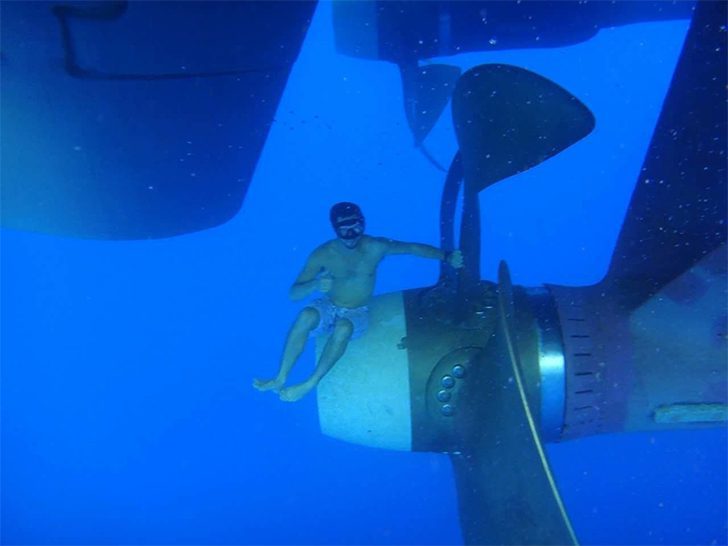
With a recorded displacement of 657K tonnes, the vessel was never able to clear the Panama Canal, English Channel, and Suez Canal. After sinking during the 1988 Iran-Iraq War and being restored to function as an FSO (floating storage and offloading) unit, the supertanker made its final journey in 2009.
Spacecraft Burial Ground
Following space exploration missions, astronauts usually land in the sea to increase their survival chances. A case in point was NASA professionals who pioneered the historic SpaceX mission dropped into the sea after their trip to the International Space Station. Besides offering a safe landing, the vast waters also serve as a spacecraft burial ground.
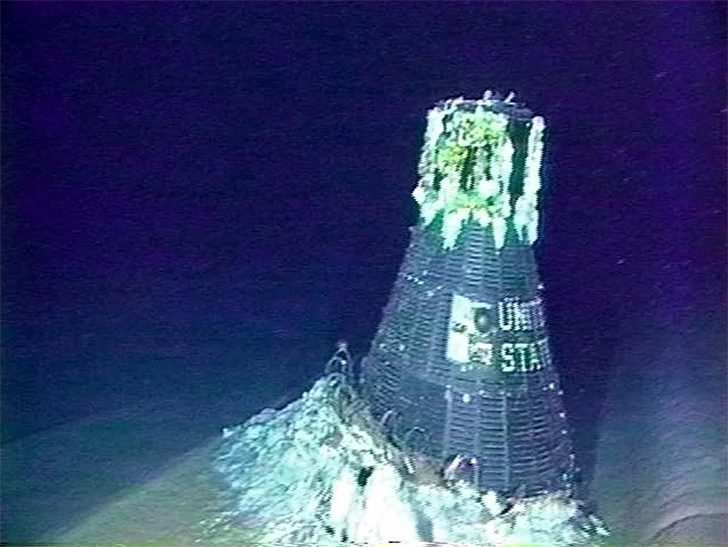
When spacecraft are no longer used, they are often routinely crashed into the South Pacific Ocean. X marks the spot at a position known as the Point Nemo, chosen simply because of its inaccessibility from land. That’s also where you’ll find the fuselage of crafts like the six Salyut stations and Space station MIR.
Jurassic Marine Life
If you ever want to picture a world filled with dinosaurs, just binge-watch the “Jurassic Park” and “Jurassic World” films. The Mosasaurus is one of the mammoth creatures seen in “Jurassic World: Fallen Kingdom.” While the Late Cretaceous dino was depicted as a friendly marine carnivore, we doubt anyone would want to see it up close.
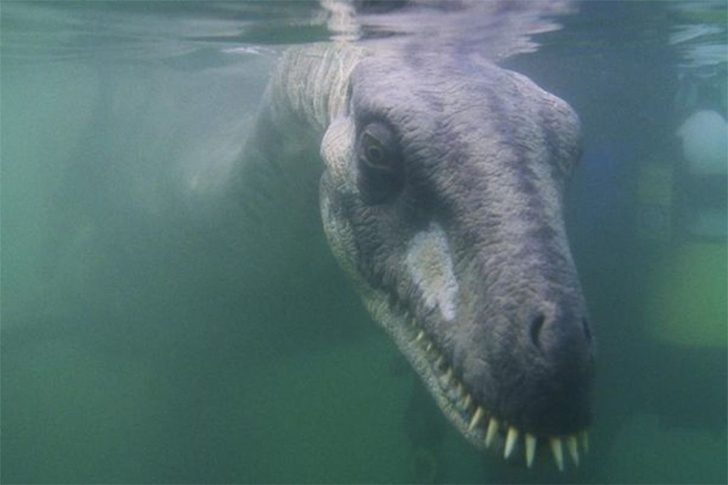
The plesiosaurs are among the list of fossils that scientists have retrieved from the ocean’s murky depths. The real-life sea monsters are believed to have existed some 65 million years ago. They primarily fed on fish and laid their eggs on the beaches. The largest of the species reportedly measured 49 feet in height.
Titanic Horror
This photo conjures up images from James Cameron’s 1997 romance drama “Titanic.” Several cruise ship passengers have lived through similar incidents, starting with those who boarded the RMS Titanic on its maiden voyage in 1912. The film took some creative liberties, but the story was inspired by the actual White Star Line’s sinking.
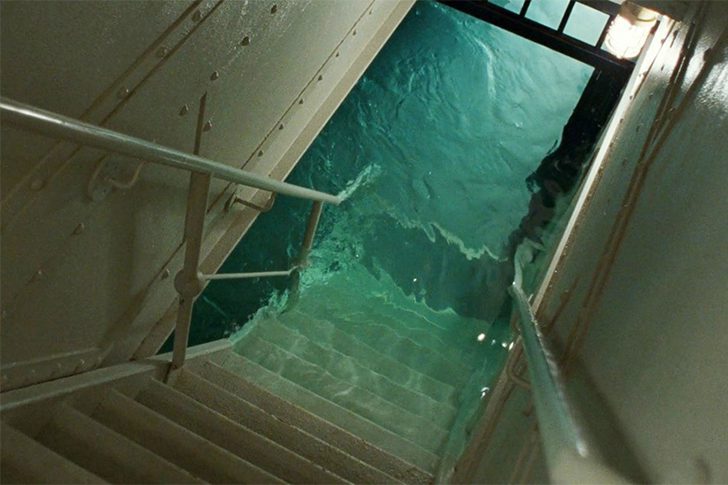
After colliding with an iceberg, the vessel broke into two parts. The capsized remains of the ocean liner rest almost 2.5 miles beneath the ocean, as per USA Today. Another bleak reality is that over half the individuals aboard the Titanic would have been rescued if only all the available lifeboats had been filled to capacity.
Curiosity or Thrill-Seeking
Some people derive thrills from driving down to the ocean’s depths, and a perfect example is this photo. The diver appears to be swimming toward a huge hair-raising hole that brings to mind the shadowy black smoke figure from “Lost.” Perhaps he just discovered a porthole leading to the lower abyss of the Bermuda Triangle.
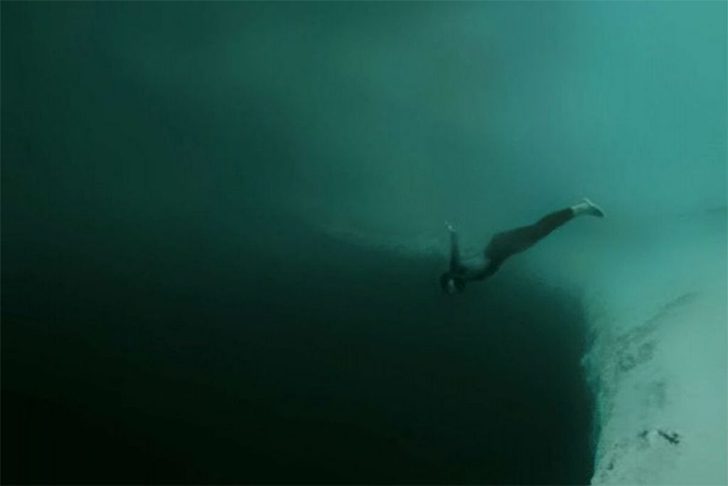
Deep-sea diving is a favorite pastime for many, and while some do it for fun, it reportedly comes with several health benefits. The buoyancy factors of deep-dive sessions increase emotional well-being, mainly when an individual is comfortable giving in to the underwater elements. The sessions can also help enhance blood circulation, a great stress reliever.
Bottomless Chasm
The underwater can be quite intriguing and breathtakingly beautiful, as evidenced by this photo. The way the rocks above almost mirror the ones below is a sight to behold. Now check out the surface underneath, and it presents an entirely different idea.
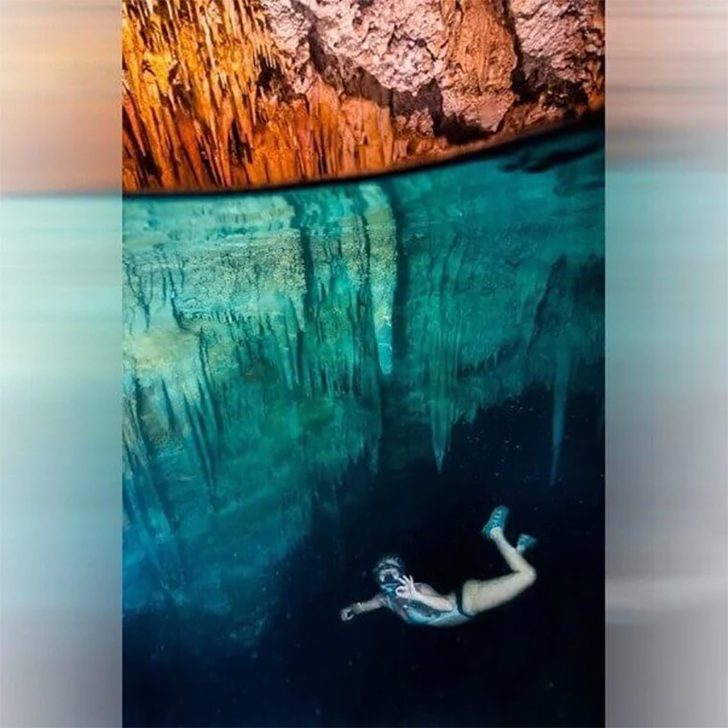
There seems to be hollow darkness that is not inviting to explore, yet the lady saw it as a befitting spot to take a picture. It resembles the Abyssal Zone, a portion of the ocean that rests about 6,600 feet below the Earth’s surface. The waters found at that point originate from the sea-air interface, mainly the Antarctic.
The World’s Creepiest Beach
To avoid the evils of the sea, your best bet would be to stick to the shoreline. If anything, this photo backs up the idea because of those arm-looking visible in the distance. It almost looks like thousands of hands are waiting to grab their next victim. Gratefully, those are not human or monster hands but eerie-looking seaweed.
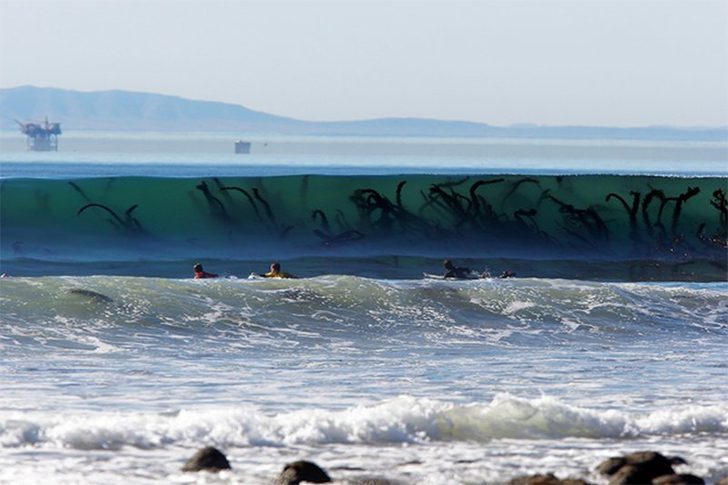
However, keep in mind that there are hazardous beaches found worldwide. An example is Hanakapiai Beach, located on Kauai’s Nā Pali Coast in Hawaii. The beach gets its name from the monster rip tides experienced in the region, and sadly, the waters have claimed the lives of many surfers.
Blood-Baying Sharks Are Always Swimming Around
Boat rides during the day can be a lovely experience, especially when the weather is right. Night-time trips are a whole different story, as observed from the photograph below. More than likely, you won’t be alone because that’s when most marine creatures come out to play. Unsurprisingly, sharks are on the list.
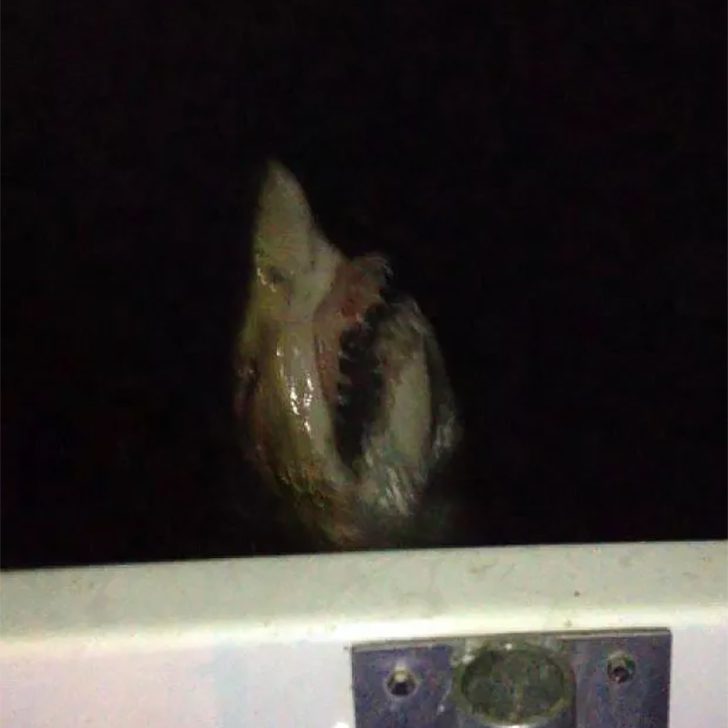
The Apex predators have rows of teeth, most of which they lose and replace thousands of times in their lifetime. They are not too picky about their habitats either, and the sea carnivores inhabit every oceanic spot ranging from tropical coral reefs to depths beneath the Arctic sea ice.
Sea-riously Frightening Fish
Plenty of harmless fish inhabit oceans, but some can leave you screaming should you encounter them in the still waters. Take a look at this beast. Although we are not too sure what kind of fish it is, we are almost sure it has massive teeth that are just ready to grind humans up into mincemeat.
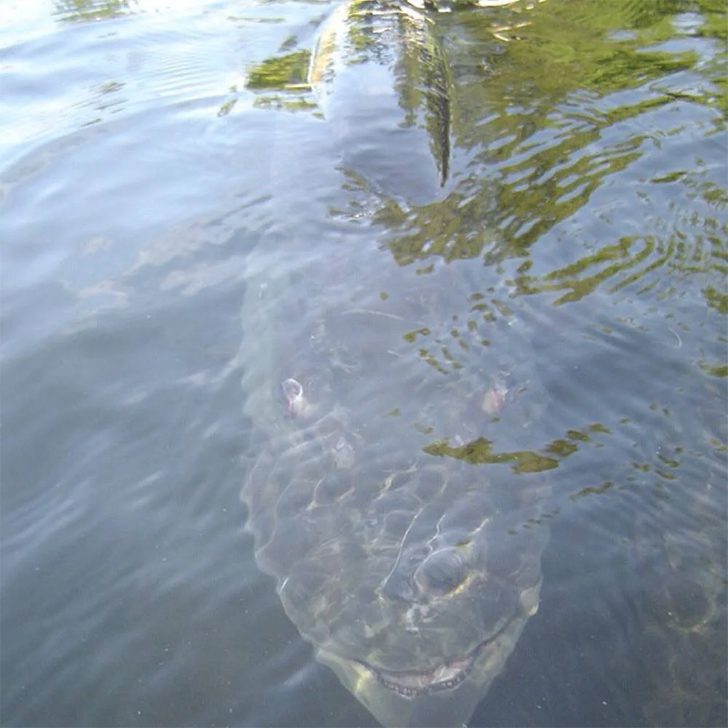
Examples of spooky fish include South America’s infamous Piranhas. DW reports that they are blood-thirsty predators who can skeletonize their food in a few seconds. They travel in schools or groups and have powerful jaws inside their tiny, heavy mouths with upper and lower teeth interlocking like shears.
The Horrific King of Crabs
Numerous beautiful and unique creatures reside under the sea, drawing people to admire them for hours. Nonetheless, a few can make people steer clear, as illustrated by the snap below. Walking along the beach and stepping on a spiny crab can make you jump up frightfully.
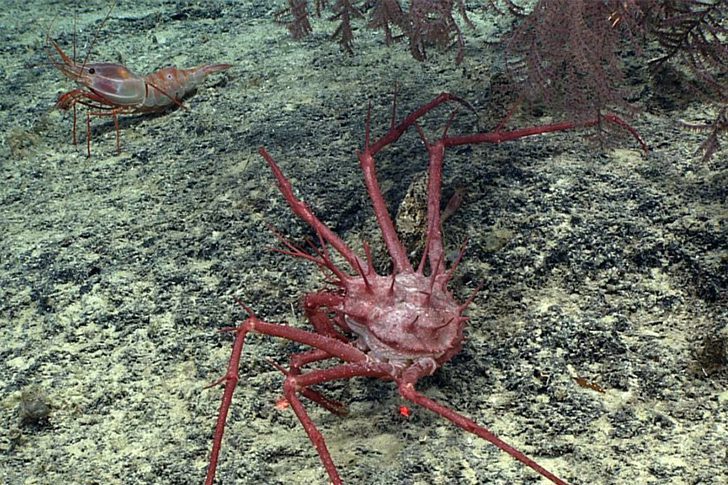
Luckily, spotting this type of crab is not difficult, thanks to its bold color and legs. This is just a quick reminder to be extra cautious when having a blast on the sand because you never know what is out there. It’s also comforting to learn that crabs are not particularly aggressive to humans, as reported by AZ Animals.
A Floating Forest
Mother Nature continually mesmerizes us with her beauty. When younger, we always thought that plants needed soil to thrive. This image teaches us otherwise and that it's possible to grow trees in a mass of water. It's a little dismaying seeing that the roots have nothing to clutch on, and the lady appears brave enough to investigate the source of the trees.
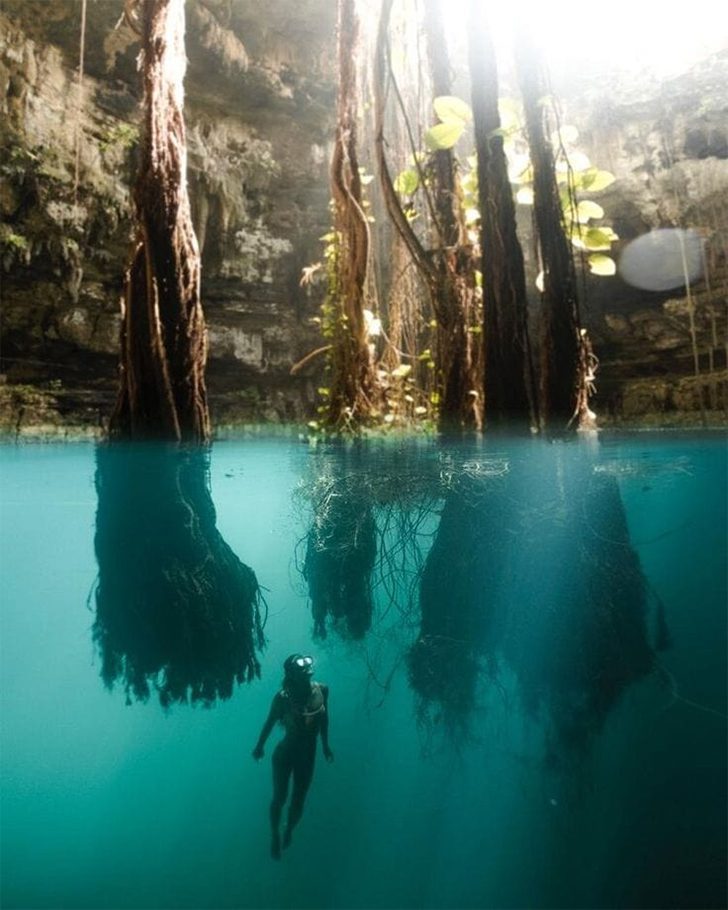
The pic above may have inspired the installation of 20 floating trees in Rijnhaven, a historic harbor basin in Rotterdam. All the trees were planted in buoys filled with ultralight lava rocks and soil to help them stay afloat.
Mesmerizing Ship Wreckage
It's fascinating to view stunning underwater shipwrecks, as this image proves. The diver is lucky to experience this first hand even though he appears tiny next to the blade. He may also be one of the few to discover sunken treasures that may be worth a tidy sum.
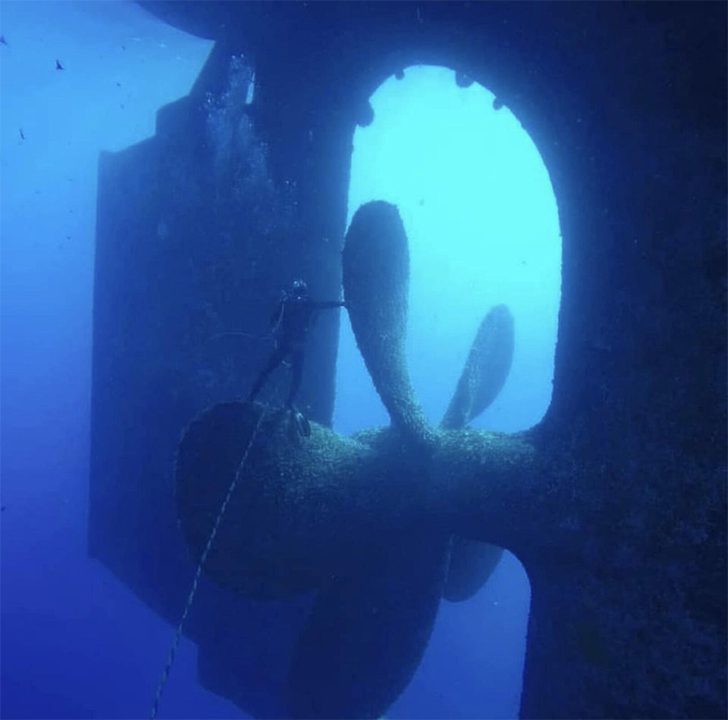
The BBC revealed that many ships sink with tons of wealth. For instance, the Spanish galleon San Jose plunged while transporting silver, gold, and precious gems from South American colonies to Spain. Columbia, in 2015 said it was the first to discover the wreck off Cartagena's coast, presenting an exciting excavating challenge to treasure hunters and archaeologists.
Whale Water Skeletons
Colliding with a whale can instantly throw you into panic mode. You can momentarily forget that the creatures are typically not dangerous and are generally friendly and curious oceanic animals. As per Whalefacts.org, they usually approach boats wanting to know what's going on in most cases.

Rather than a live whale approaching the individuals on the raft, there were bones instead, which is quite peculiar. The skeleton was discovered in the Arctic Archipelago and was supposedly taken by "Bun Viaje," a photographer. Surprisingly, bones found on beaches or shallow waters can rise quickly numerous meters above sea level.
Plane Wreckages
It’s expected to find shipwrecks underwater because the vessels can sink in transit. What raises concern is seeing airplanes down there. It is sad to imagine how they may have landed there, as most would have probably crashed and claimed lives.
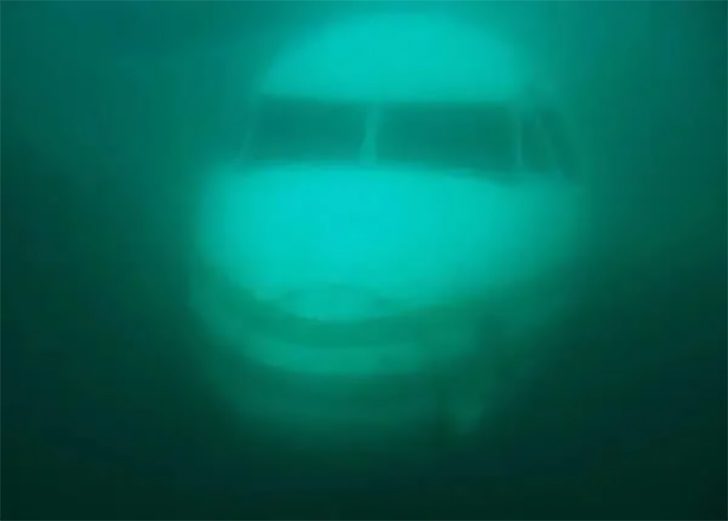
The image reminds us of “Sully,” a biographical drama film where a commercial pilot was forced to make an emergency landing after birds hit his plane. He landed on The Hudson River, and all crew members and passengers escaped alive with minor injuries. The movie was based on a real-life miraculous event where Chesley Sullenberger, commanding US AIRways Flight 1549, suffered a similar fate.
An All-Green Ocean
Pitch black is the color you would expect when traveling deep into the ocean. While this is scary enough, diving in and finding an all-green seafloor can be dreadful. We applaud the person's bravery for opting to take the snap and hope they swam away fast after capturing it.
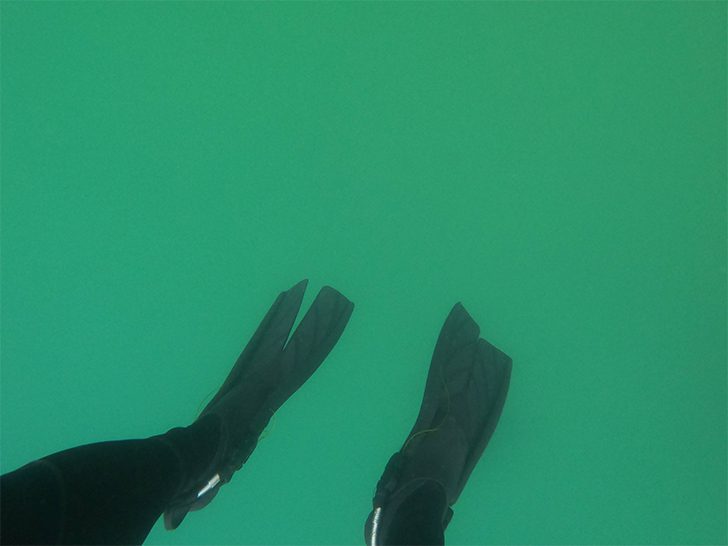
Green color can occur in oceans for various reasons. The most common one is the presence of marine algae known as phytoplankton which absorb light in red and blue wavelengths because of pigments such as chlorophyll-a, which shifts the color of the water to the green. Muddy waters in estuaries can also appear green.
The Great Shark That Will Always Live Among Us
If you do not want to see sharks up close and personal, visiting Rosie will allow you to get close to one safely. She is a white shark preserved in a glass tank at the Crystal World Exhibition Center. She was killed in 1998 after being caught in fishing nets belonging to the Lukin family.
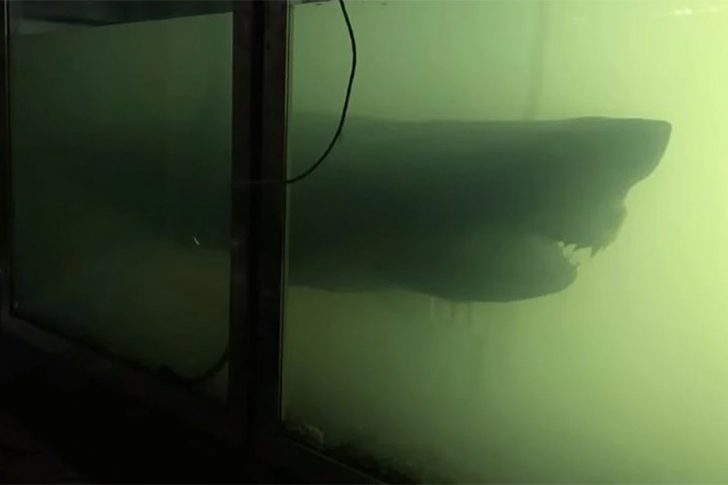
The 213-foot shark lays in a huge tank filled with formaldehyde that keeps her body solid in a close to perfect state. Before deciding to preserve the body, Rosie was once a murder suspect after a woman in Australia went missing. She was, however, cleared of the charges.
Can You Dare Swim With Sharks?
Most people will answer with a resounding NO when asked if they would brave a swim in shark-infested waters. We can't blame them; getting close enough to swim with the great whites is fundamentally dangerous. While you might not be a part of their diet plan, things could change in one wrong move.
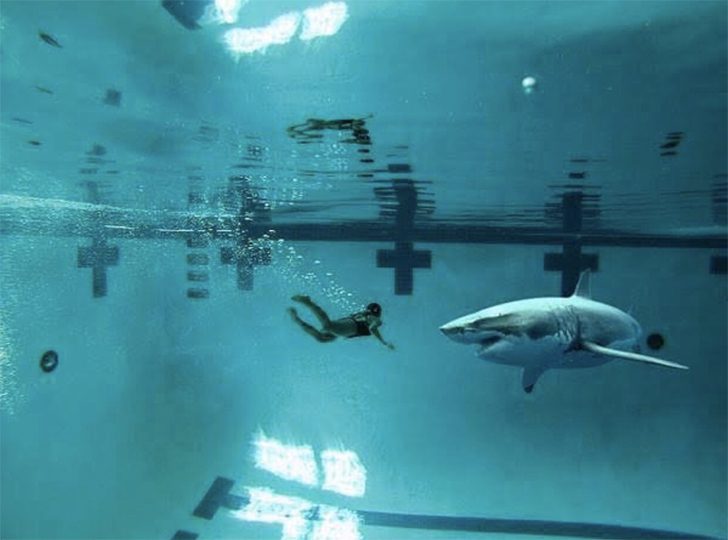
This said it is not uncommon for some people to interact with sharks in their natural habitats while swimming, snorkeling, or diving. Scuba Diving International promotes responsible shark encounters and reckons that the animals need protection, citing that they are more valuable alive. The agency also states that shark tourism can generate more than $314M yearly.
Danger Beneath The Ice
It's natural to be afraid of any creature you find beneath the waters. Now picture coming eye-to-eye with a leopard seal. Your heart would probably leave the chest. They are one of the most graceful yet feared sea animals that generally inhabit the pack-ice that surrounds the Antarctic.
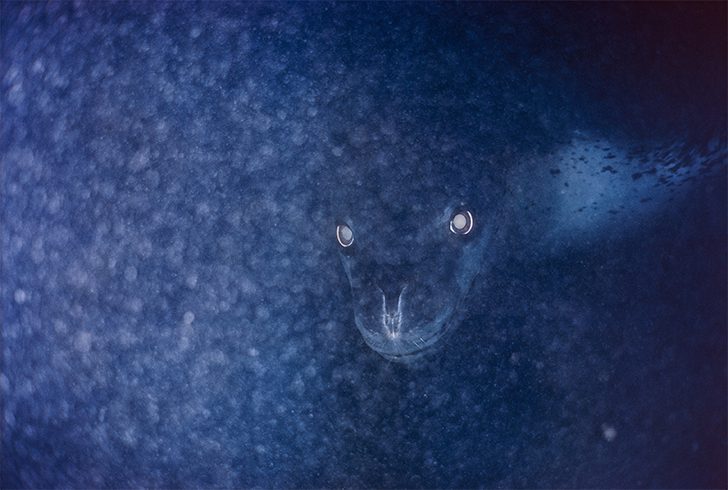
Armed with a mouth full of imposing teeth, the seals can be quite dangerous to humans. However, there are only a few cases of animals killing people. It's also interesting to note that they are lucky to have a few predators and can survive up to 26 years which is quite impressive based on the demanding and dangerous environment they live in.
Close Encounters of the Abyss
If old crafts are dumped in the ocean, it shouldn’t come as a surprise that people dispose of other things there as well. Take this shark statue, for instance, discovered at Switzerland’s Lake Neuchâtel. It’s a realistic-looking prop that Stephen Spielberg would have loved to have on set while filming “Jaws” in 1975.
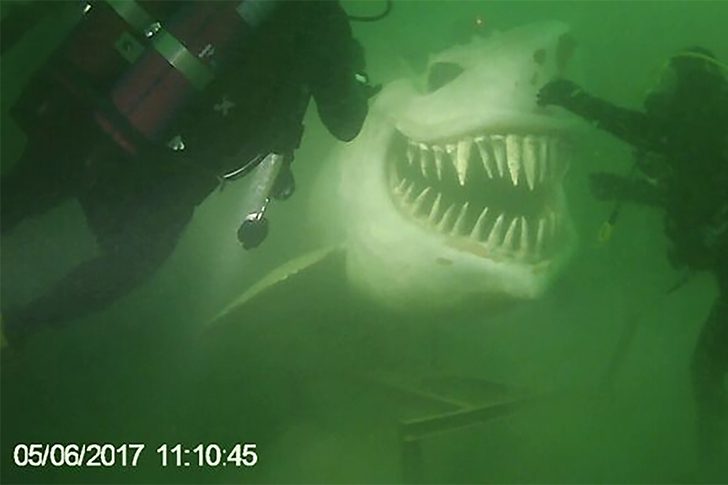
References about the movie keep creeping up because it was primarily responsible for making folks even more afraid of going to the beach for fear of becoming the victims of a vengeful rogue shark. Interestingly, while the story’s nemesis was a great white, it only made its screen debut about 80 minutes into the film.
A Shark in Black-and-White Looks Even Scarier
If you thought that sharks couldn’t look any scarier, here is visual proof that the cold-blooded creatures always appear frightening. The elasmobranch fish vary in size, and even the smallest, the dwarf lantern, is still somewhat menacing. The dwarf lantern, measuring 12 meters long, is comparatively the same size as a human hand.
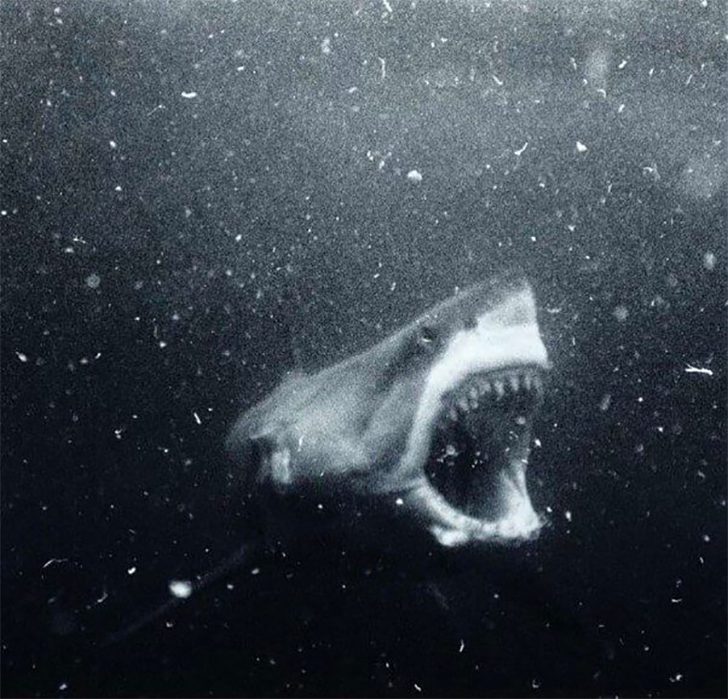
There are several other downright odd and beautiful types of sharks. As implied, the hammerheads have noggins shaped like the standard hand tool. The hammerheads use their heads, so to speak, to pin down their prey against the seafloor. Goblins have a bright pink tone, while cookie-cutter sharks earned the name from their round-shaped bite marks.
Chow Time
This photo serves as a reminder that what lurks around the surface can be equally as menacing as the marine animals that inhabit the depths of our oceans. It resembles a sea snake, and there are about 60 known species of these venomous marine creatures. Let’s not forget that most anacondas inhabit river basins!
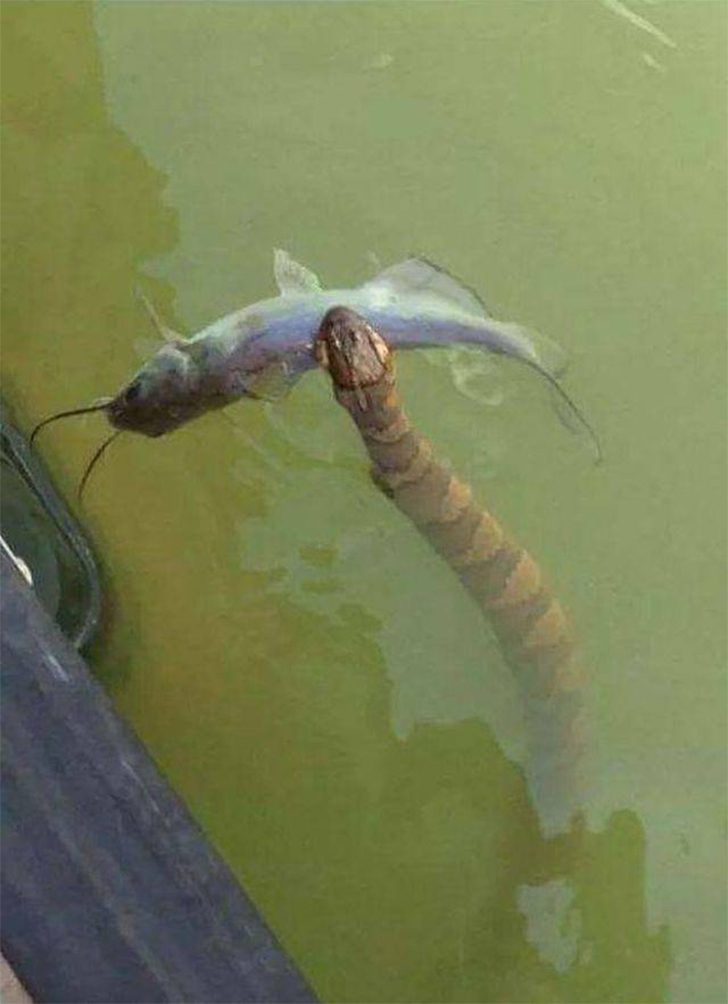
Actual sea snakes have features adapted to marine life, including elongated lungs and valvular nostrils. They also have scales, but unlike fish, theirs do not overlap but somewhat resemble paving stones. Sea snakes are also known to stay submerged for hours, given that they breathe via their skin.
The Long Way Down
Even without knowing how far down the chain goes, we can conclude that this is a deep spot. About 71% of the Earth’s surface is covered by water, and oceans contain 97% of this water. According to scientists, 80% of our oceans remain unexplored simply because of the physics behind the process.
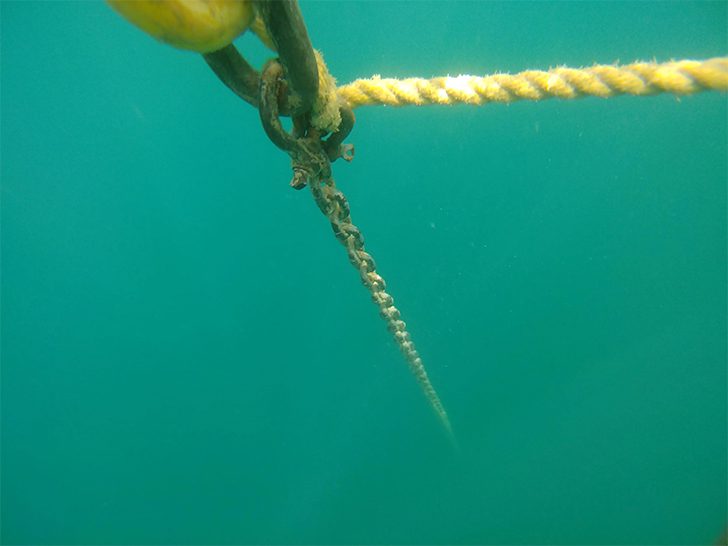
The great depths are frigid with zero visibility and crushing levels of pressure. The Ocean Discovery Program (IODP) is behind several marine research projects which have already revealed so much about the planet. The National Oceanic and Atmospheric Administration (NOAA) also advances ocean exploration projects through funding and partnership co-ordinations.
A Special Kind of School
The morbid fear of sharks is known as galeophobia. This list alone is enough proof that sharks are some of the most frightening sea creatures, and coming across a bunch of them is the stuff of nightmares. While the elasmobranch fish rely on the element of surprise to hunt their prey, they form schools on occasion.
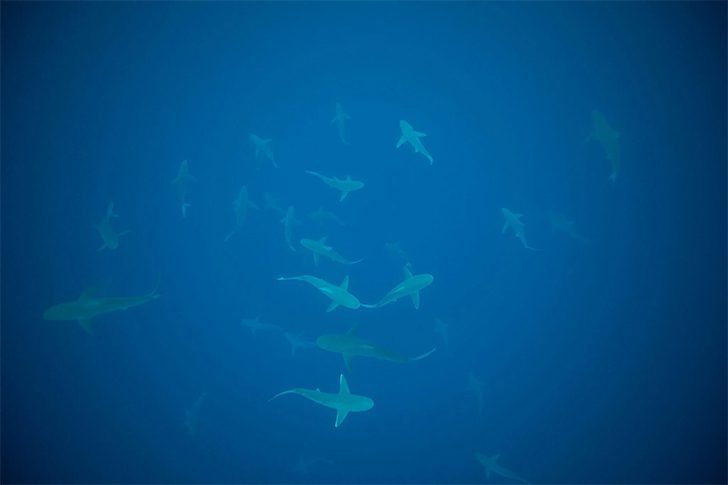
Scientists are yet to figure out why the cold-blooded fish band together to form school because they certainly don’t hunt or feed together. Scalloped hammerheads are the species that have been observed to maintain such patterns. The occurrence is also very rare, which makes such pictorial representations even more amazing.
Taking a Dip at the Jacob’s Well Spring
According to a Reddit post, this photo was taken at the Jacob’s Well Natural Area spring in Austin. The perennial spring covers a 12-foot diameter, and the descent is about 30 feet. It’s a popular spot for swimmers as well as open-water divers. There were fatalities reported between 1964 to 1984, mainly because of inexperience and lack of proper diving equipment.
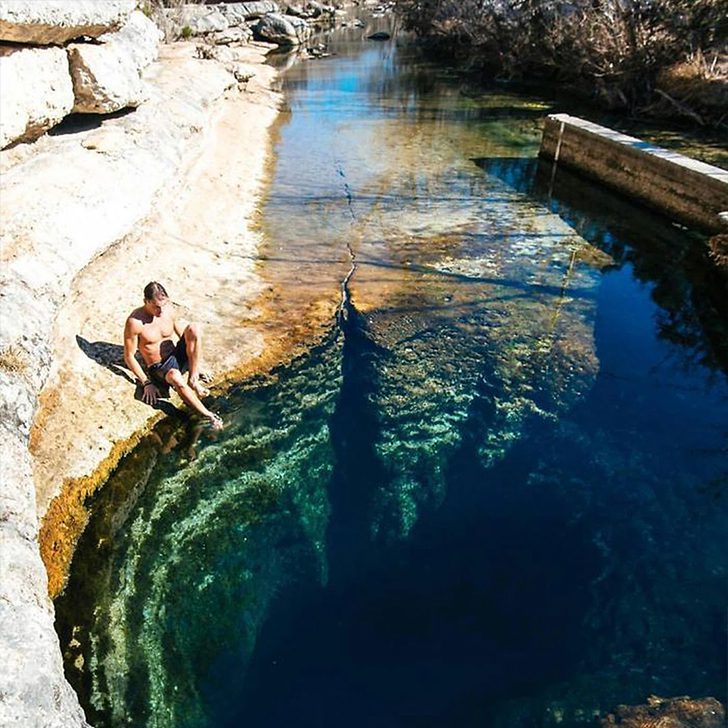
Covering about 81 acres, the Jacob’s Well Natural Area offers guided tours to the public. It involves traveling up and down a series of inclines and walking on rock ledges. Perhaps the payoff is taking a similar Insta-worthy photo at the edge of the spring.
Breathtakingly Beautiful
You have to give it to thrill-seekers who always seem to chase after the next big adventure. This diver has certainly braved other challenges before getting to this point. It resulted in a stunning photo, but it’s worth mentioning that the strong currents found at the big oceanic abysses aren’t something you want to mess with.
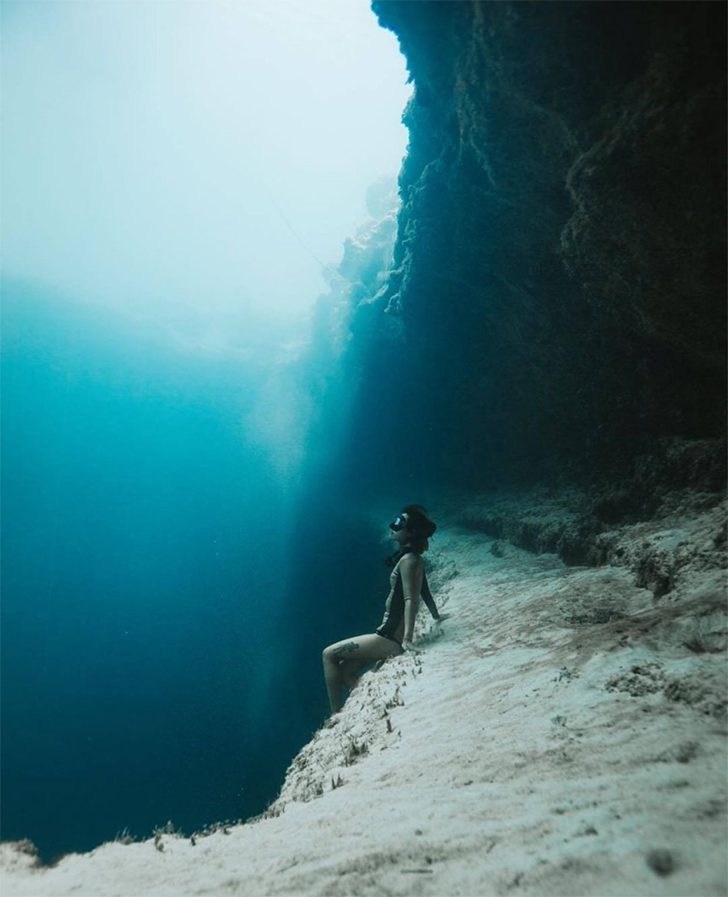
The science behind it is that currents transport food (planktons) to certain areas, and in turn, such places attract fish and other marine life. They pose a threat to divers simply because of their unpredictability, and there might be marine wildlife around the area that feel threatened by the intrusion.
A Sinking Feeling
There’s something quite sad about this photo, and it’s the sinking feeling you get imagining how this boat ended up on the ocean floor. While this is a bleak one, plenty of fascinating things have been discovered in the depths of water bodies.
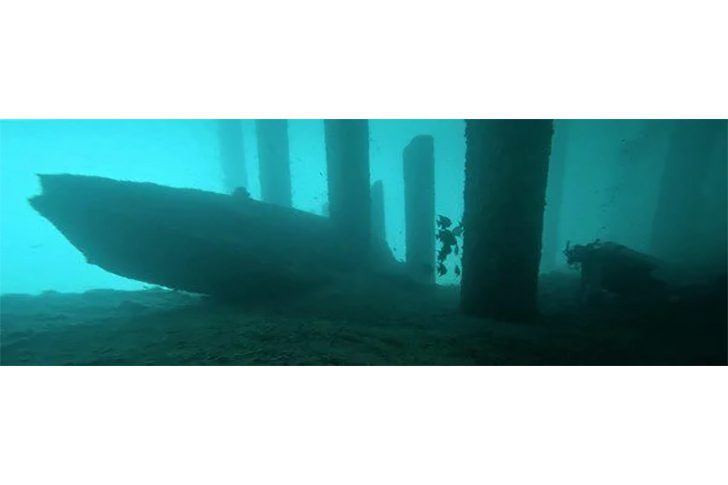
Old Bluffton stands as the state of Texas’s equivalent of Atlantis. The ancient city surfaced in 2009 after the waters of Lake Buchanan receded. Hidden 26 feet below the Lake was an old 1800s town with structures like graveyards, foundations, and tombstones. Lake Bluffton rose once again in 2016 and the lost Texan city was once again submerged.
In The Far Distance
A Redditor, who goes by the handle MrMalta, posted this photo explaining that they were enjoying a stay at an Airbnb island in the Philippines. On one exploratory journey away from the island, they paddled far off and only noticed it when the island was partially visible in the distance.
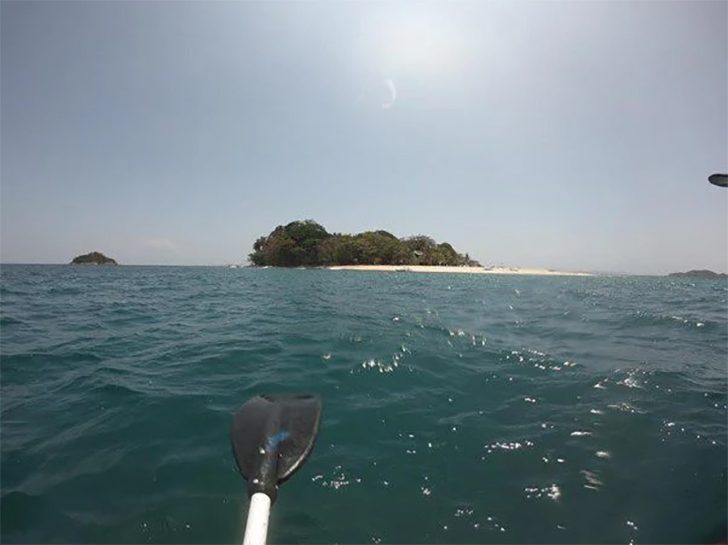
MrMalta added that it was an amazing experience punctuated with close encounters with the scary sea as well as lots of creatures. Most Redditors who commented on the thread found it fascinating that you can rent out an entire island for less than $400 per day, according to MrMalta’s account.
Pitch Darkness
Oceans are very deep, and the light streaming from the surface never gets far. The ocean floor is often pitch dark, and marine life also doesn’t thrive at such depths. Light only reaches about 200-meter depths below the water surface, and this region is known as the photic zone.
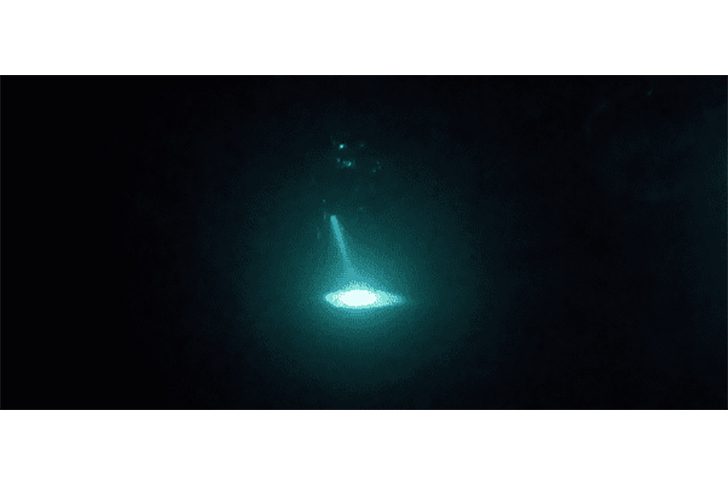
Thankfully, the light that floods through is enough to support marine flora, hence why sea animals crowd around the space. A 200-meter depth sounds quite deep but to put it into perspective; most oceans drop down to about 2,300 meters (1.5 miles) below the Earth’s surface. The Mariana Trench, the greatest known ocean abysm, is 11,000 meters (7 miles) deep.
An Underwater Work Of Art
Are these sculptures that mysteriously ended up at the bottom of the ocean, or could there be an ominous story behind them? Well, it isn’t entirely clear, but it brings to mind the 2015 viral video that showed two skeletons tied up.
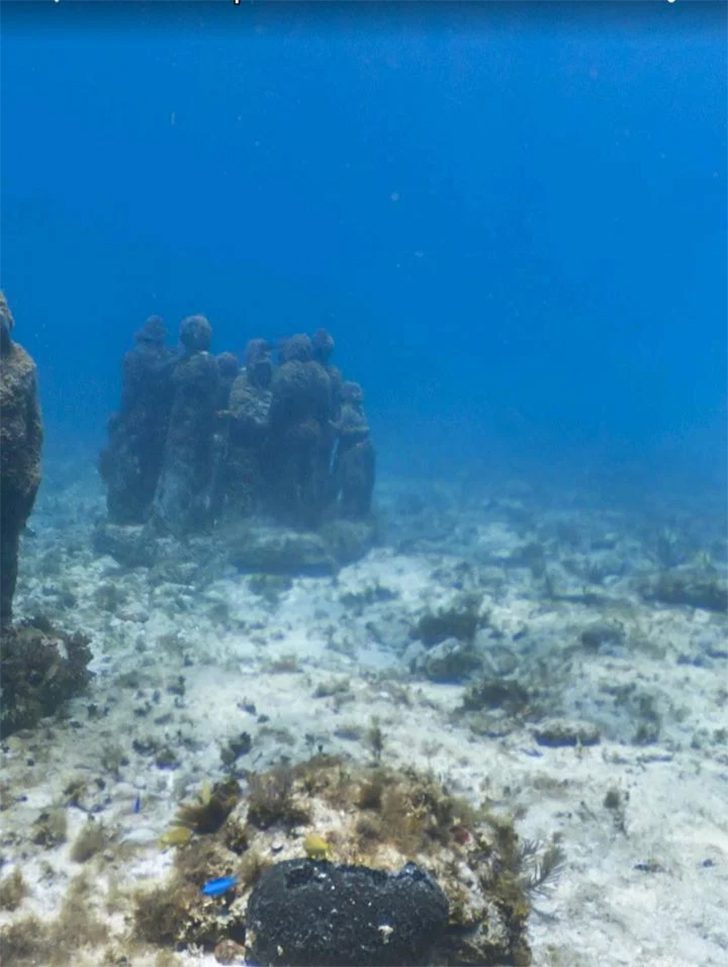
The skeletons tied to chairs were submerged in the Arizona-based Cienaga Springs. A man who encountered the scene called the authorities suspecting foul play. It later turned out that the skeletons were plastic fakes, and they even had on wigs and sunglasses to boot. Too many questions were left unanswered, and the only clue attached to the skeletons was a plaque dated August 16, 2014.
A Stomach-dropping Plunge
For about 50 years, scientists have dug deep holes in the Earth’s crust to further our knowledge about the planet, collecting core samples for further analysis. Ocean drilling goes back to 1968 when the Glomar Challenger made its first expedition, under the Deep Sea Drilling Project, into the Gulf of Mexico.
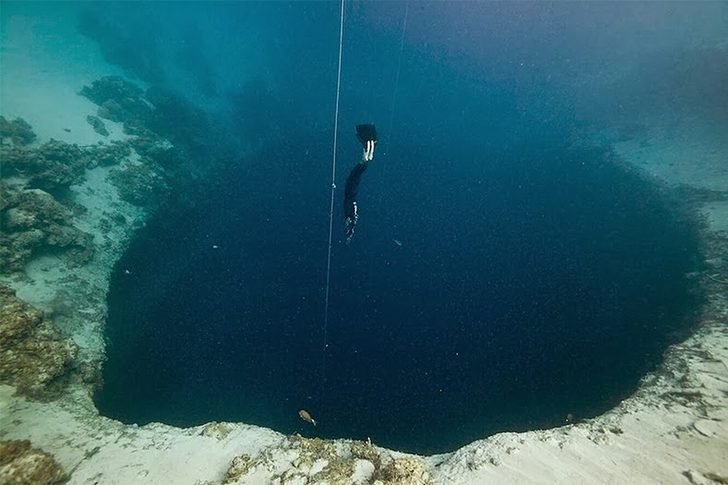
In 2021, a team of researchers dug a 5-mile home below the surface of the Pacific Ocean in a bid to study the area’s earthquake history. The hole seen in the photo appears to be a result of an ocean drilling project, and the diver is one brave person for taking the literal plunge down into the unknown.
The Iceberg’s Underbelly
At least this photo doesn’t bring to mind thoughts of what rests below the depths of the ocean. Instead, it gives a vivid depiction of what the conditions look like underneath the thick sheets of ice found in glacial areas. That’s how icebergs look when they are floating around in the water and simply put, it’s one of nature’s greatest paintings.
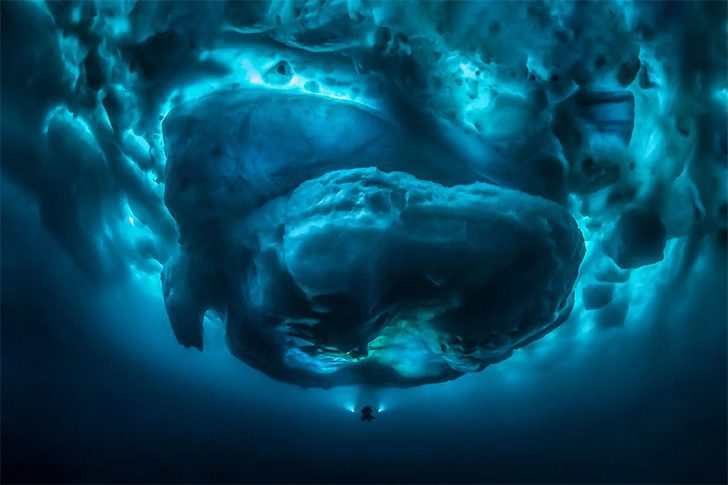
Tobias Friedrich snapped the iceberg’s underbelly in 2012 during a plunge into the Tasiilaq Fjord, found in southeast Greenland. In 2019 he braved the frozen waters for a third time to take more photos. This particular picture earned him accolades during the 8th Ocean Art Underwater Photo Contest.
The Little Mermaid
This little girl has the courage that some of us won’t muster in this lifetime. She decided to go diving rather stylishly, and the colorful mermaid costume makes it even cuter. The only problem is that the underwater cave she’s heading towards doesn’t seem that inviting.
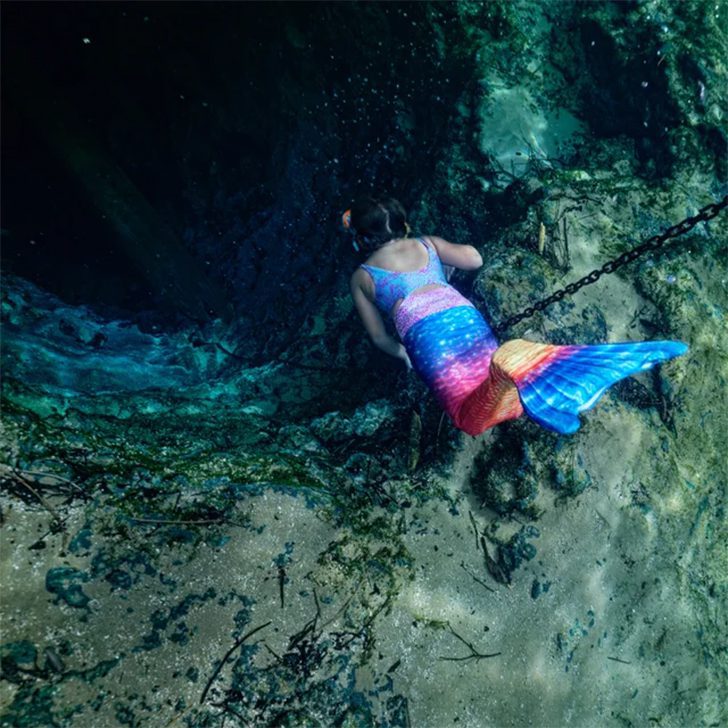
Underwater caves result from tremendous erosion as well as faults, rock foliations, or fractures caused by the large rocks found in the sea shift. Scientifically, underwater caves are part of the network of ordinary caves, only that they form the submerged segments. Extraordinary natural biota inhabits such caves, including green turtles, barracuda fish, and manta rays.
Quite The Balancing Act
At first glance, this looks like another cheerful holiday snap until you see what’s floating underneath the blue waters. It would make most folks rethink their summer vacation plans, but not photographer Andy Mann. He has braved swims with great whites and teamed up with National Geographic for Arctic expedition shoots.
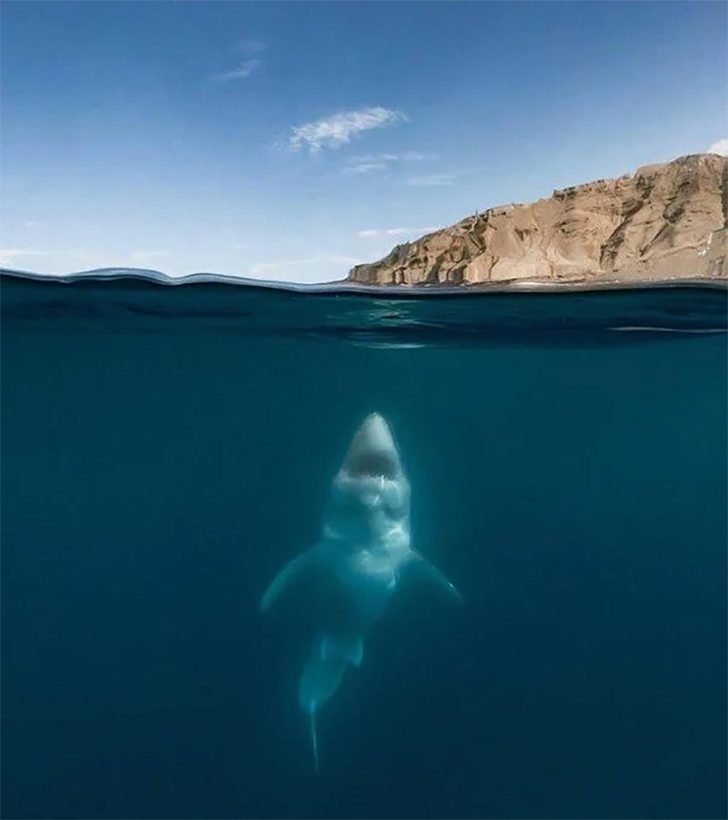
Mann also specializes in underwater photography and has worked extensively with the nonprofit SeaLegacy. He took this photo at Guadalupe Island, and the Mexican region is a popular spot for shark enthusiasts and cage divers. As per Condé Nast Traveler, Mann snapped the photo while standing on a cage hanging off the back of a boat.
Don’t Ignore the Sign
The words warn anyone coming upon this sign that there’s danger in the water. It begs the question about the submerged objects that warranted putting up the warning sign. There are plenty of safety guidelines, but several places are on the list of places you should never dive.
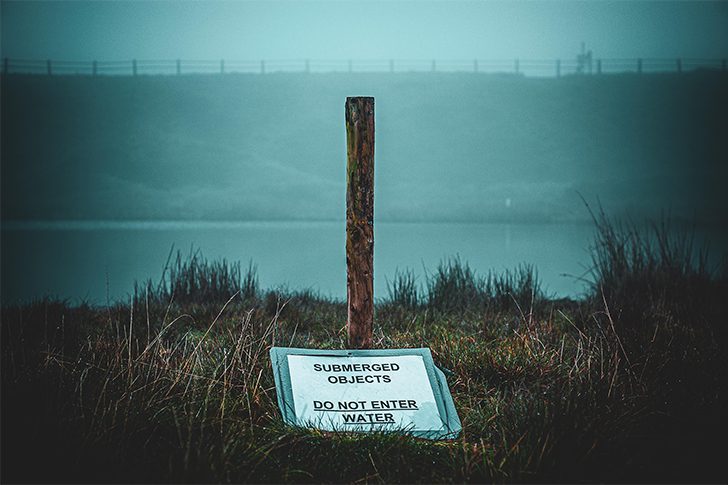
The Strid is the name given to the narrowest point on Yorkshire’s River Wharfe. Many have been dragged down the waterway, and it’s simply not a great idea to dive, let alone set foot, around the area. Kipu Falls in Hawaii and the Horseshoe Lake found in California’s Long Valley Caldera Field are other places where you probably shouldn’t go diving.
show more






















